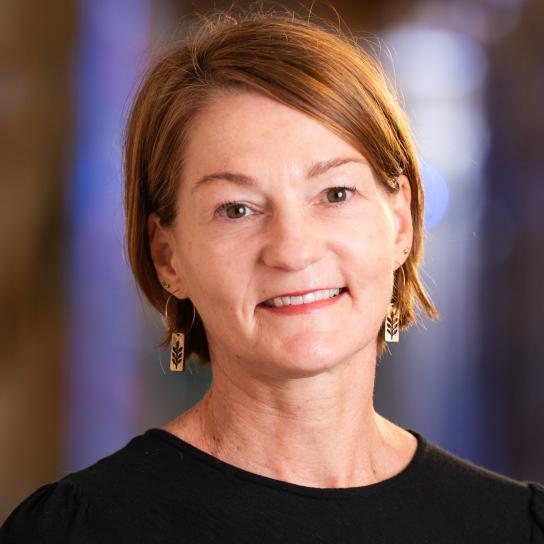by Beth Staats
Quick Summary
I attended the annual Lake Superior Libraries Symposium in beautiful Superior, WI, on Friday, June 7th. All of the sessions I attended were dynamic and informative, and all of the speakers did a wonderful job!
1) Stop writing a book. People spend about 20-30 seconds reading an email. People spend about 10 seconds viewing/scanning a poster. Cut out text. Write as if you’re writing for a billboard. Keep it short and to the point and include only the information you really need. The more words used, the less people comprehend.
2) Repetition is boring. Don’t be afraid to change things up.
3) Differentiate from your competition. Think about who your competition is and be conscious of what they are doing and how they are marketing.
4) Show, don’t tell. For example, if announcing a speaker, show pictures of something they have done rather than just telling about what they did. Avoid boring speaker bios.
5) Being risqué is o.k. It gets people talking. So long as you know that you may offend some people.
6) Stop thinking like a librarian and start thinking like your audience. Use simple everyday language and avoid library lingo.
7) Use prime real estate wisely. A library’s home page is prime real estate. All marketing material should have prime real estate. In emails, the subject line and first sentence are prime real estate. Facebook is prime real estate. Include posts with pictures or videos to get more looks.
8) Punch your words. Use punchy verbs and leave adverbs out. Instead of “very good,” use “fantastic.” Avoid exclamation points and the phrase “join us.”
9) Use multimedia.
10) Get help, or hire. It’s not realistic for all of us to have marketing skills.
The next session I attended was “Keeping Fresh in a Stale Job Market” and the three presenters, Diane Kauppi, Alison Stucke, and Emily Savageau, shared all sorts of tips relating to job searching, cover letters, interviewing, networking, and promoting skills in an online environment. Networking can be easier now with all of the social media tools available, especially for many of us “shy” librarians. We can make friends and expand our professional network through Facebook, Twitter, and LinkedIn. We can also promote our skills online through the many eportfolios out there like eFolioMinnesota, Weebly, and Prezi, to name a few. eFolioMinnesota is a “web-based portfolio designed to help you create a living showcase of your education, career, and personal achievements.” Weebly lets you create a free personal website to highlight your skills and experience. Prezi allows you to create an interactive resume that you can put into a LinkedIn account. After a taco bar lunch and some mingling with other symposium attendees, it was off to another session. Presented by Laura Lott, Public Health Specialist at the University of Minnesota – Duluth (UMD), I learned about ergonomics in her session titled, “Stand Up, Sit Down, Right Right Right.” The University of Minnesota Department of Ergonomics has been in existence since 1992. Between UMD and the U of MN Twin Cities campuses, they do about 800 to 1000 ergonomic evaluations each year. These are primarily office evaluations, however they do work with kitchen, maintenance, dentistry, labs, grounds workers, and heavy equipment operators. Resources invested in this program have been proactive vs. reactive, and there has been a reduction in workers comp and employee discomfort. Laura’s office developed a self-evaluation. You should be sitting arms-length from your monitor and your monitor should be at eye level. Chairs should be height adjustable with arm and upper back support. Exercise balls are not recommended as a primary chair. The ergonomic mantra is move, move, move. Sit, stand, recline; it is all good. Ergotron, a company that makes office products has said that “sitting is the new smoking.” They are using data to sell their ergonomic office products. Apparently the average adult spends 50% to 70% of their work day sitting. Dangers of prolonged sitting include issues with blood flow and cholesterol, hence the new phrase: “sitting disease.” Research has found that standing meetings are usually more efficient, though there can be dangers of prolonged standing too. So the question is: to sit or stand? Laura made it clear that both are important, and when you move at work from standing to sitting and vice versa, this is known as postural rotation. When your body feels fatigue or discomfort, you should switch positions. Stand when you can, sit when needed. Establish a healthy blend of both. She suggests reducing your daily sitting time in half but do it gradually in increments. Research validates that workers are more productive when they are not in pain, and workstations should incorporate comfort. The day was coming to a close but I had one more session to attend. Presented by Stef Morrill of WiLS and Jean Anderson of South Central Library System, “Beyond Networking: Building Meaningful Relationships and Collaborations” did not disappoint. Jean and Stef made a great pair to present this session since they have been good friends and colleagues for 10+ years. The session began with a question: What is the value of professional relationships? Attendees offered responses like brainstorming, venting, mentoring, learning about new topics, not feeling alone, collaboration, energizing, sharing skills, and a few more. They then shared with us some big picture concepts:- Every message has a relational message and a content dimension
- Rewards – Cost = Outcome
- Genuineness (be authentic and be real)
- Vulnerability (from social niceties to giving the most disclosure)
- TRUST – it’s all based on trust
- Be negative
- Be indirect
- Don’t share
- Find ways to undercut someone’s values
- Keep your distance
- Proselytize
- Never tell people their value to you- never appreciate them
